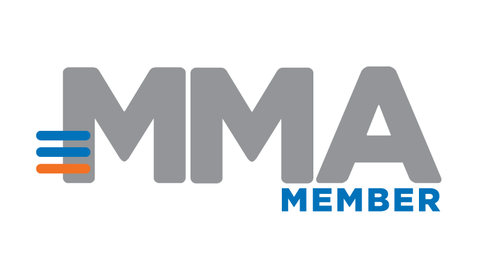October 18, 2006
Mobile Marketing in Turkiye
By Laura Marriott | October 18, 2006 | ClickZ
To View Direct Article, please click HERE.
Last week, the Mobile Marketing Association (MMA) hosted its Mobile Marketing Forum EMEA in Istanbul, Turkiye. Attendees included over 180 industry leaders from countries on three continents. The event featured discussion and debate surrounding how to drive the mobile marketing industry forward not only in Turkiye but worldwide.
Turkiye is considered by many to be a mobile marketing innovator. It has three mobile operators. The largest, Turkcell, has over 29.8 million mobile subscribers (of a total 45 million subscribers nationwide out of a 71 million population). The other mobile operators are TelSim and Avia. The country enjoys full voice and data services, with data revenues estimated to hit $1 billion (USD) in 2007 by the Wireless World Forum.
The MMA awarded one of its leading mobile marketing providers, Aerodeon Turkiye, the 2005 Best Use of Mobile Marketing in EMEA award for a campaign it conducted with FritoLay (Doritos -- For Love or Money campaign).
Turkish participants at the MMF EMEA clearly demonstrated mobile marketing is alive, well, and seeing great success in the Turkish market. Such campaigns as loyalty, text-to-win, and mobile content downloads were profiled, demonstrating not only the campaigns but also critical success rates for mobile initiatives (oftentimes, information we don't have easy access to in North America).
Herewith, a few of the campaigns discussed at the event.
Finansbank
Finansbank is a Turkish financial institution with over 300,000 customers and 700 ATM locations. The bank conducted a number of SMS (define) based campaigns that included SMS surveys for retention and loyalty; credit limit updates and status via SMS; campaign alerts, and statement reminders.
Mobile marketing allowed Finansbank to acquire new customers via direct response, increase existing customer spend through loyalty and communication; and increase frequency of customer spend through promotional channels.
BP
BP profiled a few mobile campaigns it offered to customers in the Turkish region. The focus was customer loyalty and retention. The first campaign provided a special code on purchase receipts. Customers were encouraged to text to a short code to receive free credits for prepaid calling. The process was very easy to use.
Over the past few years, BP has hosted a number of campaigns, resulting in over 2.5 million unique users, 25 million transactions registered, and 95 percent retail participation. BP has also been very successful leveraging the campaign database to provide additional loyalty incentives to customers.
Using the database, BP offered a Customer Protection Program that offered loyal customers three months of accident insurance, free of charge, for responding to a short-code-based initiative. The program received great support and allowed BP to upsell additional insurance offerings.
BP learned that SMS is a stronger response channel than IVR. The higher the participant's age, the higher the response rate. Correspondingly, higher the brand loyalty, the higher the response rate. BP also learned integrating mobile technologies with existing marketing channels increases the mobile campaign's success.
FritoLay
FritoLay presented a large number of mobile campaigns it's conducted over the past few years, primarily promotional initiatives. It focused many campaigns around building brand loyalty and driving brand interaction and activation (using mobile as the opportunity to establish the one-to-one dialogue with the consumer, something much-discussed in this column).
The company presented excellent insight and understanding of its customer base and recognition of the value mobile brings to its campaigns, citing personal, memorable, direct, and interactive as some of the key benefits. For each campaign, FritoLay presented findings that included not only the number of participants but also participation by hour, day, and prepaid/postpaid, which enabled it to direct ad spending toward the most popular activation times. It's another example of how a brand can use data it extracts from mobile campaigns to drive the success of other media elements.
Pepsi
Pepsi Turkiye has been an active participant in mobile marketing initiatives for the last three years. It was the first in Turkiye to deploy free minute promotions, hourly campaigns, digital music campaigns, and interactive mobile applications on pack. To date, Pepsi Turkiye claims the highest-ever promotional campaign in terms of participation for its category. The company likes mobile because it's an effective media tool compared to TV, enables interactive communication, allows customization, and ensures tracking for database and consumer information.
One campaign Pepsi presented involved a ring tone and wallpaper featuring the famous "Da Da Da" song. Over 200,000 ring tones were downloaded during the promotion.
Conclusion
All speakers presented significant insight and understanding of the mobile channel and their experiences. Many brands that presented have been engaged in mobile marketing since 2004, and therefore have had the opportunity to refine and improve their efforts over time. Mobile lets consumers be entertained while interacting with their brand of choice. Turkish companies have found that simplicity and instant gratification are increasingly important, and mobile provides an exciting, interactive channel for consumers.
Thank you to Turkcell, Aerodeon Turkiye, and the other Turkish, European, and North American delegates who attended. Many of our North American team felt the Turkish hospitality was some of the best we've experienced to date. We'll definitely be back to experience the new advancements in mobile marketing.

